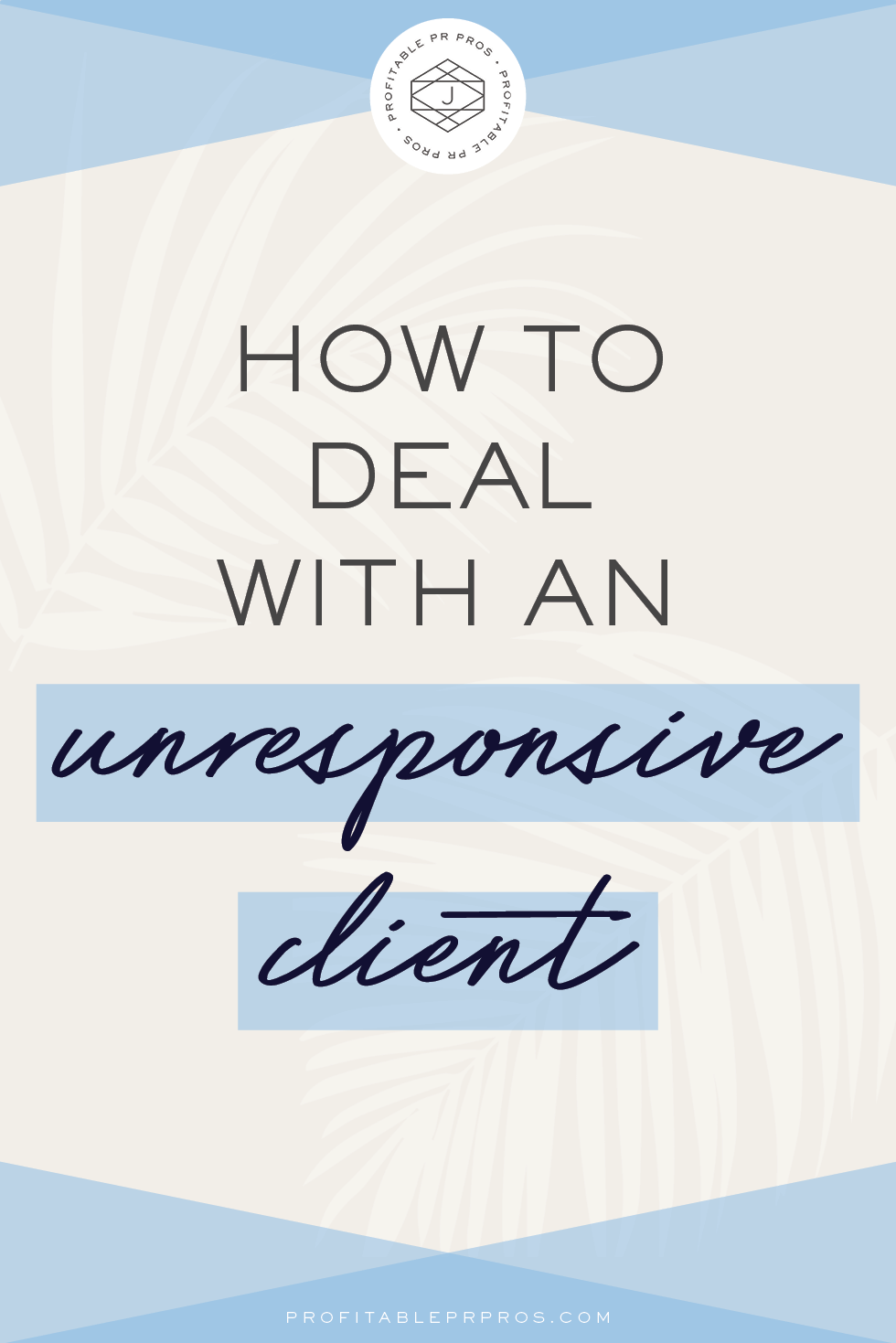How to Deal with an Unresponsive Client
Aug 30, 2021
As a PR pro, your main goal is to successfully generate incredible results for your clients by creating impeccable pitches and landing those sought-after media features. But sometimes (and trust me—we’ve all been there!) you have to deal with a totally unresponsive client.
When you’ve pitched something with a time-sensitive deadline, you need your clients to respond quickly. An unresponsive client can really impact your ability to generate certain results...and, even worse, they can damage your relationships with key media contacts.
So WHAT should you do when a client is totally unresponsive (or takes forever to respond)?
How To Work With An Unresponsive Client
Working with an unresponsive client can be a challenge. From the start of the process, you can take steps to prevent headaches down the line.
Let’s explore some of my best tips and tricks for working with an unresponsive client.
Set Up Expectations Right From The Beginning
When you start working with any client (but especially those who seem like they will be hard to reach), have a meeting where you establish expectations.
Hold your clients accountable for their participation in your success by setting clear expectations right from the beginning! You can add a clause in your contract about client conduct expectations.
For larger companies, you’ll also want to see if there is someone who’ll be a set point of contact. This is a step you’ll want to take right at the beginning of working with a new, large client.
In the discovery call and proposal process, communicate with clients how important responsiveness is. You should emphasize the importance of making sure you have all of the assets you need to generate results.
You can always tell your clients that when you reach out to them, it’s IMPORTANT. Show them that you know they’re busy and respect their time, but will reach out when it’s essential to be successful at your job.
Assess How An Unresponsive Client Can Impact YOU
Sometimes, you need to decide whether working with an unresponsive client will be worth it or not. After all, client behavior impacts you and your business!
For example, let’s say you pitch a client for an expert interview and land it, but they don’t respond, show up, or show up on time. You not only won’t get the coverage, but you’ll potentially damage your reputation and relationship with that media contact. You’ve worked hard to build those relationships, so you definitely don’t want to endanger them!
So, how can you combat this in advance?
Before pitching time-sensitive opportunities that involve your client, let them know how important it is to be responsive. Give your clients earlier deadlines than the journalist actually requests. That’s right—build in cushion time so that they actually meet the real deadline!
Reach out to clients earlier (if possible) when you need something so that you can follow up/remind them. You should also be more proactive in letting clients know what’s on the horizon and when you’ll need them to participate in order to achieve results.
You can always submit client interview pitches without the clients’ feedback if they don’t get back to you in time. Just remember to clear this with clients in advance! You can create a policy as part of their contract giving you permission to act without approval if it isn’t received within a certain time frame.
Avoid Pitching An Unresponsive Client For Time-Sensitive Opportunities
If you are consistently working with an unresponsive client, don’t pitch them for those time-sensitive opportunities anymore.
Let your clients know that you can no longer pitch on their behalf for those opportunities since they aren’t open to responding (or aren’t meeting tight deadlines). Try to make this a respectful conversation, though! Acknowledge how busy they are and that you don’t want to add more to their plat that isn’t a priority.
You can always tell the client that if their schedule lightens up and they do want these opportunities to be a priority, you can switch up your strategy and add these pitches back in.
Related: What Do You Do When a Media Opportunity Falls Through?
Strategically Vet Your Clients
The most important thing really is preserving your reputation and relationship with your media contacts. That’s why it’s important to be selective about who you work with.
When you vet your clients, consider how easy they are going to be to work with! You don’t have to say yes to every client opportunity. In fact, you shouldn’t!
If you’re ready to uplevel your PR game and start working with higher-end clients, The Agency Accelerator is going to be a game-changer for you. Inside this program, you get the EXACT framework you’ll need to grow and scale a profitable PR agency, from landing high-end clients to charging what you’re worth.
Working with an unresponsive client is something every PR pro faces at one point or another! As long as you’re proactive and strategic, you can avoid negative consequences.
Just remember that YOUR business is the most important. You need to focus on preserving key relationships with your media contacts. By setting expectations early, vetting your clients, and saying no to clients with red flags, you’ll set yourself (and your clients) up for success.








